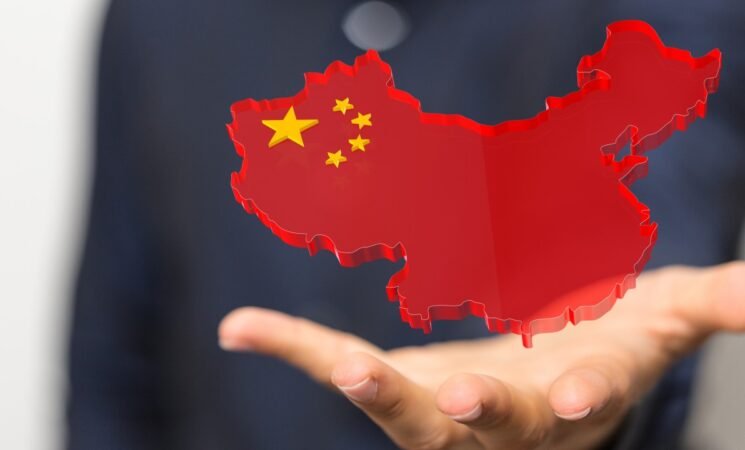18 June, 2025, NIICE Commentary 11298
Niveditha KV & Dr. Karamala Areesh Kumar
"The rise of China is the most important geopolitical event of the 21st century."
-Henry Kissinger
Introduction
The World Bank describes China as "the fastest sustained expansion by a major economy in history." Since China established its open-door policy in 1978 under the leadership of Deng Xiaoping, it has seen tremendous growth from an isolated economy to the emergence of the 'world's factory.' In the past four decades, China has mainly stood out in its rise to power, contributing to a possible new world order with a significant shift in geopolitical dynamics. Its status as a great power continues to grow and extend its influence worldwide. It is crucial to note that several of these developments were possible due to aggressive policies that remain relevant in their progress. From its soft power to wolf warrior diplomacy, China has only continued to assert itself as a global power. China's comprehensive ways of achieving its desired ends involve a combination of military, economic, and legal strategies and tactics, which include:
String of Pearls
String of Pearls refers to a network of military and commercial facilities developed by China in the form of naval bases, ports (pearls) along its sea lines (string) extending from the mainland to south of Port Sudan on the Red Sea and majority of the Indian Ocean to support their economic and military interests. It was a term coined by Booz Allen Hamilton in 2004, an American defence contractor, who believed that although the ports could serve as a Naval base, there was little evidence. China built its first overseas military base in Djibouti, Africa (2017) for its significant location, and heavy BRI projects have also been established to increase economic interests in the region.
Salami Slicing
Salami Slicing is a military strategy China has employed to acquire territorial control by obtaining pieces of land and gradually expanding its influence over time. It involves taking small, calculated actions such as building artificial islands, establishing military facilities, and deploying naval forces to strengthen its impact over time. The Salami Slicing is known to have originated during the early Cold War period by Communist leader Mátyás Rákosi, who eliminated his opponents through incremental tactics. China established Sansha City on Woody Island in the Paracel chain, which China, Taiwan, and Vietnam jointly claim. China took control of the Island from South Vietnam in 1974, and in 2012, China established Sansha City as the administrative centre for China's territorial claims in the Indo-Pacific region (South China Sea). China has been accused of using the same strategy against India along its Line of Actual Control (LAC) from the 1950s, particularly in areas like Arunachal Pradesh and Ladakh.
Cabbage Wrapping
Cabbage Wrapping is a tactic deployed to seize islands by surrounding them with multiple layers of naval ships, similar to the layers of cabbage. This prevents the involvement of external forces by establishing a maritime barrier. General Zhang Zhaozhong of the People's Liberation Army Navy initially used the term 'cabbage wrapping', particularly in the South China Sea, where they surround an area with fishermen, boats, and navy warships so that the island is wrapped around like a cabbage. Although Scarborough Shoal is well located within the Philippines' exclusive economic zone, China claims that the deployment of maritime vessels encircling Scarborough Shoal prevents Philippine activities. Similarly, the tactic was used on Pagasa Island in the South China Sea, surrounding the island with layers of vessels.
Belt and Road Initiative (BRI)
BRI, previously referred to as One Belt One Road, is a global infrastructure and economic development project led by China to connect Asia, Europe, and Africa through a network of roads, railways, ports, and other infrastructure. It's a grand strategy to reclaim China’s geopolitical dominance in Asia. The idea was initially announced in 2013 by President Xi Jinping as the Silk Road Economic Belt, which comprises a maritime road of shipping lanes and a belt of overland corridors. BRI is a multilateral initiative that combines all the ongoing projects which began as a bilateral initiative. The China-Pakistan Economic Corridor (CPEC), launched in 2015, was the first official BRI project that aimed to improve Pakistan's economy through infrastructure and energy transportation systems and to connect the ports of Gwadar and Karachi to the Xinjiang region, simultaneously benefiting China with access to the Arabian Sea, promoting economic growth. The Maritime Silk Road (MSR) is a more significant part of BRI, which aims to enhance maritime connectivity with ASEAN, Africa, Europe, and the Indian Ocean.
Debt Trap Diplomacy
Debt Trap is a vicious cycle of debt that a weaker nation or individual borrows to repay old loans until the debt burden goes beyond control, leading to bankruptcy. Some countries participating in BRI projects might fall into debt traps because they cannot repay large loans; thus, China is asserting its control over the seized assets and resources. The term 'Debt Trap' was coined by Brahma Chellaney, an Indian geo-strategist who saw this tactic as an attempt by China to expand its neo-colonialism. China offered its support to Sri Lanka to increase the movement of ships across the east-west shipping route, hoping to reduce the ship traffic on the Colombo Port. However, due to Sri Lanka's inability to repay the loans, they handed over control of the port on a 99-year lease. Pakistan has long relied on foreign aid, with China being its biggest creditor. The CPEC project has often been an example of China's manifestation in its debt trap diplomacy, where Pakistan is heavily indebted to China. Similarly, post the military coup in Myanmar, China has prioritised its interests in the state. Myanmar is in debt from the BRI project, particularly the China-Myanmar Economic Corridor (CMEC), and over the Kyaukphyu Deep-Sea Port, which provides direct access to the Indian Ocean.
Grey Zone Tactics
It refers to non-traditional military tactics, including economic sanctions, trade barriers, and interference in internal matters of other nations. They are far from regular diplomacy but short of direct military force to avoid escalating into a conflict, falling into the 'grey area.' China pursues its interests in the South China Sea by maintaining the status quo, heavily depending on the air and maritime domains. A Chinese Coast Guard vessel had fired a water cannon at a Philippine supply boat that was delivering supplies to the Second Thomas Shoal, and they were subjected to repeated water firing. China claims to do so as they were accusing the Philippines of violating its sovereignty. China applies the same tactics against India through the construction of Xiakong (well-off) villages along the Line of Actual Control (LAC), which serves as dual infrastructure use in areas like Ladakh, Arunachal Pradesh, and the Doklam tri-junction to essentially serve military purposes under the pretence of providing support to the civilians. China also refers to Arunachal Pradesh as Zangnan (Southern Tibet), placing historical claims on it.
Conclusion
In the contemporary world, China is seen as a great power state that is challenging the US and being a superpower while simultaneously creating an alternative world order. China once again proved its influence during the pandemic by introducing mask and vaccine diplomacy to exert its soft power influence worldwide. Looking ahead, China is keen on expanding BRICS as it feels that the presence of 10 members would limit its global impact and further intends to challenge the US. Its relations with Iran and the North, with mutual interests, aim to counter Western influence. China came up with its consensus, the Beijing consensus, though not formally coined by the state, which held characteristics in contrast to the US' Washington Consensus due to its rapid economic growth and development, posing an alternative to Western ideologies.
Niveditha KV is a Research Scholar, Department of International Relations, Peace and Public Policy, St Joseph's University, Bengaluru, India, & Dr. Karamala Areesh Kumar is the Head of the Department of International Relations, Peace and Public Policy (IRP and PP), St Joseph’s University, Bengaluru, India.

